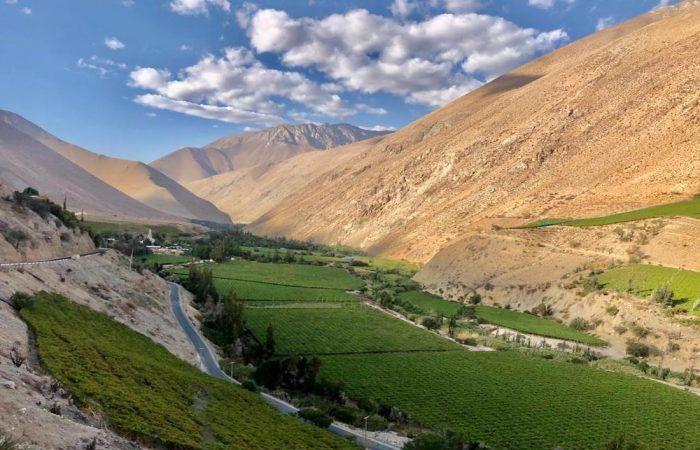
“The pisco is from a territory, it is from North Chico. It cannot be done anywhere else other than the north boy,” explains the historian Pablo Lacoste. Among his main studies, his book “is recorded”The Pisco was born in Chile. Genesis of the first denomination of origin of America ”edited by Ril Editores in 2016.
This book is based on a large number of primary and secondary sources relieved by the interdisciplinary research team led by the author, especially unpublished documents surveyed for years in the National Archive and in the repositories of the National Institute of Industrial Property (INAPI).
Within the framework of the Chilean Pisco day, which is celebrated on May 15, Prochile ar He talked to the historian, who gave some definitions about this day.
“Before there were people, some factories who made distillate in Rancagua, in Santiago, in Concepción or in Valparaíso and named Pisco. Since the delimitation of the administration of origin was made, all that disappeared. The State took care of control, that no one falsified the pisco and, in turn, the producers of the North Chico proudly accentuated their identity, ” Explain.
Then, each one put where he was from, what part of the north Chico was his distillery. “If it was from Atacama, if it was from Copiapó, if it was from Alto del Carmen, of the Elqui Valley, of the Limarí Valley, of Ovalle, of Huamalata. Each one was affirmed, but all within the north small,” he details.
Then, Lacoste continues, “This topophilia, this love of the territory, helped the Pisco be affirmed as a very rooted product to a region.”
The importance of a denomination of origin
Lacoste details that “the denominations of origin emerged in Europe in response to the philoxy plague -a parasite of the vine -that generated a brutal impact since many famous countries lost their vineyards, 4 million hectares of vineyards were destroyed.”
Given this situation there was a fever of falsifications, abuses and strange things. “To stop that, a great agreement was made to create the denominations of origin, so that only the sparkling wines made of Champagne could be sold as champagne. The same happened with the Bordeaux wines, with the wines of Jerez, of Porto. That is to say an entire international, European system, of protection of the denominations of origin to avoid falsifications,” he details.
In America, since there was no phylloxera plague, no urgency was felt at that time for doing something similar. “It just occurred in the great world economic depression of 1929. There began the process of creating and delimiting the denominations of origin. The first was the pisco in Chile, by decree with force of law 181 of May 15, 1931. Then, the first wine law with the denomination of origin came, which was also made in Chile in 1937. And later, others were coming, in Mexico in 1974 the denomination of tequila origin was delimited; In the 90s, the wines of Argentina and the Peruvian Pisco began in 1994 by law, and this system was putting together, ”he lists.
A successful denomination
The academic argues that “it was a remarkable case, because it was successful.” Unlike the denomination of origin of wines of 1937, which failed to make foot -which products protected by that law remained in very small places and did not develop -the pisco, yes.
“The pisco achieved it largely because of the associativity of the companies that made Pisco. That is, after the creation of the designation of origin, the main artisanal distilleries that existed at that time organized and created the Pisco Control Cooperative, in the year 33, and then a process was launched by which small businesses agreed, they traced common strategies, consolidated the identity of the product. That joint work has made it the most important grape distillate in America until today”, Says Lacoste.
In addition, he attributes success to the visionary nature of the then president of Chile, Carlos Ibáñez del Campo, by creating that denomination of origin, more The attitude of associativity, to join all to work for a common goal of artisanal cooperatives, that is, the artisanal distilleries of Pisco that formed that cooperative.
Pisco and identity
Within the heritage of Chile, Pisco is one of its most emblematic products. “The Document of the Torre Hacienda of 1733 is very important because it is demonstrated documentary by the act of a scribe of the Spanish Empire, the existence of Pisco prepared in the Elqui Valley at the beginning of the 18th century. Then other similar documents appeared and this shows that it is a product that has more than 300 years of experience and elaboration in the north Chico de Chile.
“Any other place in the world, in no other country documents have been found that accredit the existence of Pisco in the colonial era.”
In other countries they have appeared but after independence. “Chile is the only country in the world that already elaborated Pisco in the colonial era, this is extraordinary,” says Lacoste.
For Lacoste, “the Chilean Pisco has helped a lot to strengthen the identity of the North Chico de Chile as a quality product zone. Recall that the north small is on the southern border of the Atacama desert, which is the most arid desert in the world. It is a heroic viticulture, where there is very little water, it is a very arid area.”
So, having a little water, he says, it costs a lot to elaborate Pisco: “Planetary productivity is very low, apart from the pisco they are usually vineyards that are high in the mountain. And productivity is low and then it is a very important cultural effort of all the peasants who have managed to keep this tradition alive.”
“This makes it a very special product, which requires a lot of concentration, a lot It is a very special product, with an identity, with a very large territorial roots, a tradition and this makes it special and unique”, He says.
Pablo Lacoste was born in Villa Nueva, Mendoza, and is a historian with extensive experience and recognition worldwide. Bachelor of History, Professor of History and Doctor in History and American Studies, specialized in international studies. He is director of the Ibero -American Magazine of Viticulture, Agroindustry and Rurality (Rivar), as an academic of the Institute of Advanced Studies of the University of Santiago de Chile and is the author of numerous books and articles published in scientific journals.





